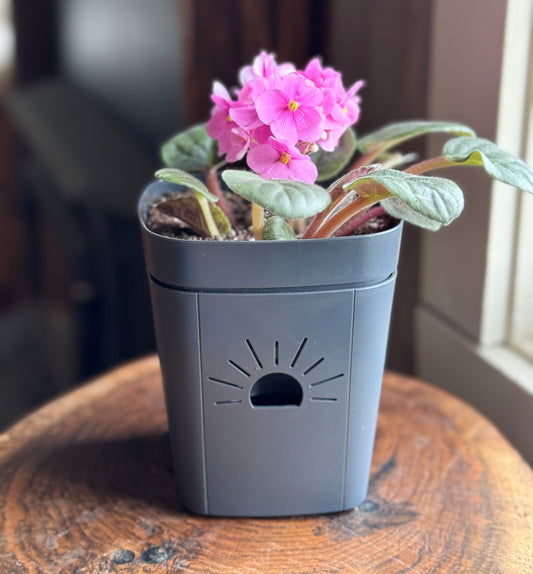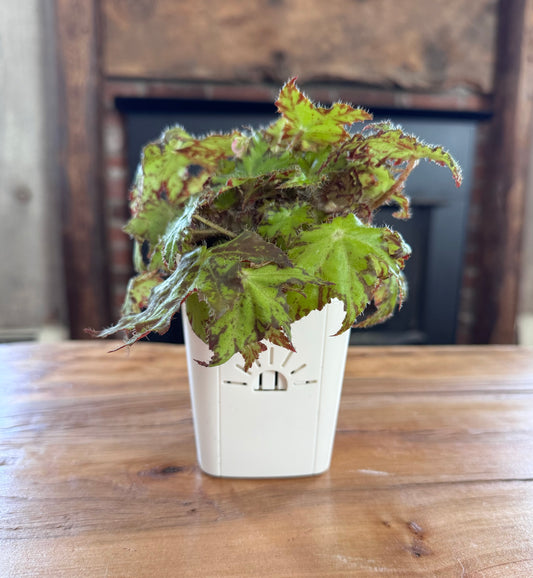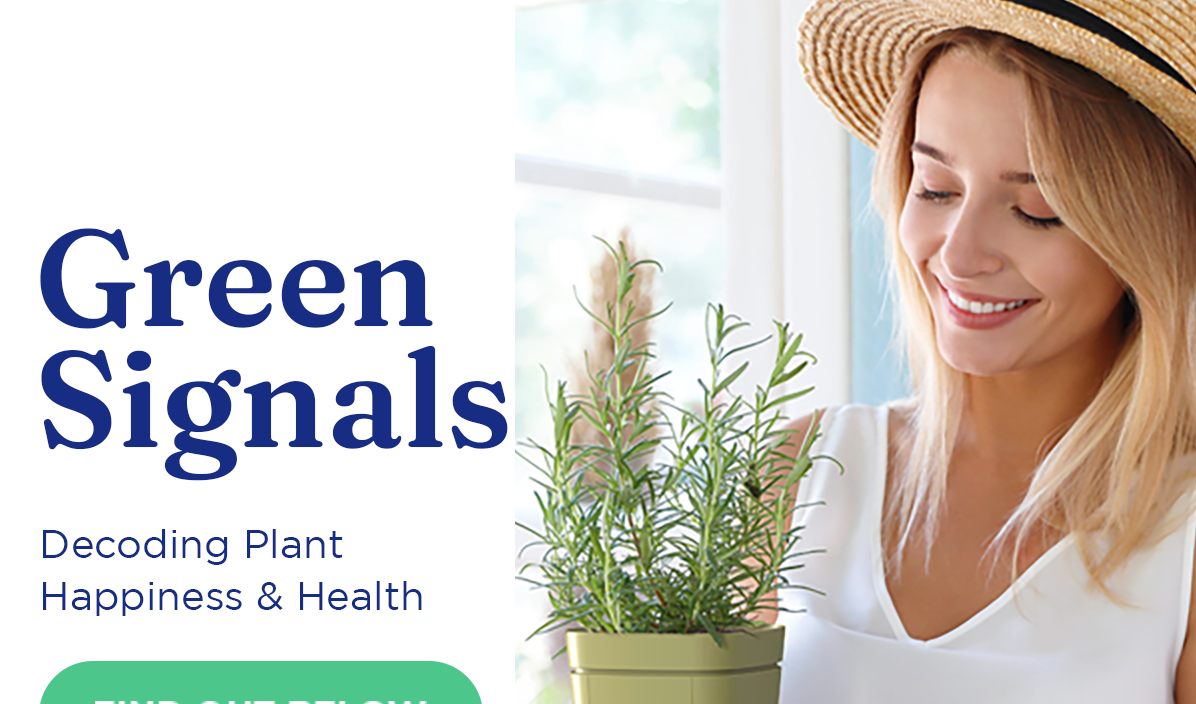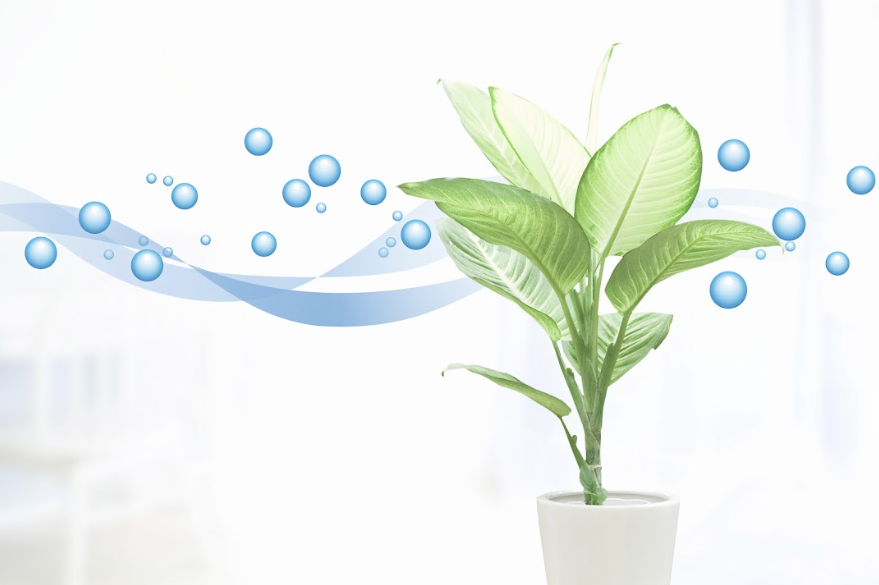Origins
The genus Hoya is composed of more than 500 species of tropical plants in the Apocynaceae family. Most of these plants are native to different countries in Asia, including India, Indonesia, Thailand, and Vietnam, among others. Additionally, some species can also be found in Australia. For a list of Hoya species, click here.
Hoyas are evergreen perennial plants that can be creepers, vines, or shrubs. They were named by botanist Robert Brown in honor of Thomas Hoy. When given the proper support, they can grow to be 3-59 feet tall. Leaves are usually succulent and can be smooth, felted, or hairy with and come in many different colors and patterns. Flowers appear on peduncles at the tip of the stem, and these spurs can grow up to 11 inches long over each flowering cycle.
Light
Requirements
Hoyas prefer bright, indirect sunlight. While they can tolerate direct sunlight in the spring or fall, too much sun during the summer can damage the leaves and cause color fading. It’s best to give them about 6 hours of bright light each day, and you can use a grow light to supplement natural sunlight in winter.
Genus Summary
| GENUS | Hoya |
| COMMON NAMES | Wax plant, Wax vine, Wax flower. |
| LIGHT | Bright, indirect light |
| WATER SCHEDULE | Naked Root = 14 days |
| WATER REQUIREMENTS | Keep the soil evenly moist but not soggy. |
| HUMIDITY | Medium to High |
| TEMPERATURE | 60-70°F |
| FEEDING | 1x month |
| TOXICITY | Most Hoyas are non-toxic to humans and pests. A few species are mildly toxic. |
| PESTS | Aphids, mealy bugs, scale insects, and spider mites. |
| DISEASES | Sooty mold, botrytis blight, root rot. |
| POT | Choose a pot with maximum root zone aeration to mimic their natural epiphytic environment. Flowers when potbound. |
| SOIL | Chunky orchid-type mix |
| FERTILIZER | When young 3-1-2 once monthly. When mature, 5-10-5 once monthly. |
| PROPAGATION | Stem cuttings or layering |
| PRUNING | Prune dead or straggly foliage. Do not cut off spurs; they flower more than once. |
| SIZE | 3 to 59 feet outdoors. 1.5 to 8 feet indoors. |
Water Requirements
When planted in a Naked Root planter, Hoya can be watered on a 14-day schedule.
If using a conventional type of pot, keep in mind that wax plants naturally live in arid climates, so they can easily be overwatered and experience root rot if left in wet conditions. During the spring and summer, they need the most hydration. If the top 1-2 inches of soil is dry, give it a thorough watering. Make sure to avoid flooding the pot and let the soil fully dry out before giving it more water. In the fall and winter, when temperatures are cooler, these plants need much less water.
Most Hoya issues stem from waterlogged soil and overhead watering. Watering too much can lead to rotting and ultimately kill the plant. To ensure a healthy plant, err on the side of underwatering and be careful with the amount of water given.
Humidity
Hoyas are perfectly content, with average indoor humidity levels of 50 percent. There are a few varieties that require 60 percent or higher to thrive, which is still doable indoors with a humidifier.
Temperature
Being from the tropics, hoya plants thrive in temperatures above 50 degrees Fahrenheit, with most species preferring 60-70 degrees. Indoors, this can be easily managed.
If you plan on taking your Hoya outside, make sure to check what the minimum temperature is for your specific plant and keep it safe by bringing it indoors when the temps get too low. There are some Hoyas that prefer temperatures below 80 degrees, but most of them can handle up to 95 or higher. To protect them from the heat, give your hoyas shade during the most intense part of the day and keep them out of direct sunlight.
Toxicity
The large majority of Hoya plants are non-toxic to both humans and animals. There are a few types that are toxic if ingested.
Pests and Diseases
Most of the bugs that bother Hoyas are sap-suckers, such as aphids, mealy bugs, scale insects, and spider mites. Thankfully, these can usually all be taken care of by using neem oil. Just spray it on all parts of the plant, and it should solve the problem. Whiteflies and thrips are more common when the Hoya is kept outdoors.
When caring for Hoya plants, one of the most frequent illnesses seen is sooty mold. This black substance forms on thick leaves that are coated in plant sap or honeydew from pests. You can easily get rid of it by wiping it off with a damp cloth. Another disease that can appear on Hoya plants is botrytis blight, which starts as greyish fungal patches near the center and eventually causes mushy leaves throughout.
The last issue to be aware of is root rot. This is caused by too much moisture in the soil, which encourages fungal growth. To avoid this, be sure not to water your plant too much. If the leaves or stems have wilted or have black or brown lesions, root rot may be a factor. You can try spraying copper fungicide on the soil and on the plant itself for some relief. If the roots are black and mushy, then it is likely too late, and you should discard the plant.
Pot
When selecting a pot for your Hoya plant, make sure to choose one that has adequate ventilation around the root ball. This will create a similar environment to what the plant would experience in its native habitat, growing on trees with its roots exposed to the air. Additionally, Hoyas tend to bloom when they are slightly pot-bound, so select a container that is only one inch larger than the size of the root ball. Doing this can help you get the most flowers out of your Hoya.
Soil
For most Hoya plants kept as houseplants, a soil composed of pine bark, perlite, and peat moss is ideal. Mix one part pine bark with two parts peat moss, and add a pinch of lime to lower the acidity. To improve drainage, include some perlite in the mix. If you are using a commercial potting mix, you may want to add extra perlite. An orchid mix is also a good option, as it is light and allows for good drainage.
Fertilizer
The hoya plant, being mostly foliage, needs lots of nitrogen for optimal growth. Give new plants a high nitrogen fertilizer once or twice per month with a 3-1-2 liquid mix. When the plant is mature, switch to a high-phosphorous fertilizer to stimulate flowering. Use a 5-10-5 liquid fertilizer about one month before the plant’s blooming season to achieve beautiful Hoya flowers. No fertilizer is needed during the fall and winter months.
Propagation
Hoyas are easy to propagate using stem cuttings or layering. For stem cuttings, take pieces of softwood or new growth that are six inches long with some leaves. Place them in water or a slightly damp growth medium for the roots to form.
Layering involves anchoring a softwood tendril from one plant to the soil of another pot with pins. It takes some time, but the roots will form from the stem, allowing the tendril to be snipped free from the mother plant and grow independently.
Pruning
Hoyas require some attention to keep them looking their best. Take away any wilted, damaged, or dead parts of the plant. If a leaf is diseased, it should also be pruned. All other pruning should be done with care. These plants produce new flowers on stems called spurs that have bloomed before and will continue to do so in the future, so these should not be removed. The long, trailing parts of the Hoya should not be trimmed back too severely as they take a very long time to grow back.
10 Striking Varieties and Cultivars
Hoya kerrii albomarginata – This variety is also sold under the same H. kerrii ‘Variegata,’ even though the leaves are naturally variegated. Famous for its large heart-shaped leaves that are green with butter-yellow edges. This is one of the Hoyas that likes humidity above 60 percent, light feeding, and warm temperatures. It is a slow-grower but will eventually surprise you with bright yellow flowers. Do not buy a sweetheart Hoya as a single-leaf specimen planted in soil. They rarely ever grow into fully vining plants. When purchasing, find one that is fully rooted and already has at least two leaves and a node.
Hoya australis – This fast-growing Hoya is a good choice for anyone new to the genus. This one is native to Australia and will grow vines up to eight feet long. The flowers are white clusters with pink centers that arrive in fall, just when everything else is finished flowering. If you live above USDA Zone 10, you can grow this Hoya outdoors. It has pure green leaves that are ovular with a slightly pointed tip. This is one of the poisonous Hoyas, so keep away from children and pets.
Hoya lanceolata ‘Bella’ – This Hoya is nicknamed the beautiful Hoya for a good reason. It has small pointy leaves shaped like spears. The leaves are green and grow in massive, thick clusters on short vines, making this Hoya look more like a bush than a vine. It will produce white star-shaped flowers with purple middles. Don’t be alarmed when the peduncles fall off after flowering. That is normal for this cultivar. This Hoya is good for small spaces because its mature size is only 18×18.
Hoya callistophylla – This variety has big leaves that are light green and have a leathery texture. The ribbed veining of the leaves is darker green, and the leaves themselves can be 10 inches long and four inches wide. This species originates in Borneo and is fine with cooler temperatures. It grows 12 feet long and produces white bunches of flowers that are mildly sweet-smelling. This species is toxic if ingested.
Hoya curtisii – This lovely Hoya has olive green leaves with a blotchy white mottled pattern. The leaves are rough in texture and only half an inch wide. Each leaf is nearly round, with a tiny elongated point at the tip. When exposed to brighter light, this Hoya will blush burgundy. It grows a thick matt of vines that are three feet long and look awesome hanging over the edge of a basket. The tiny white flowers form in a ball-shaped cluster and have purple centers. This one does not like extreme heat and should not be taken outside in summers over 85°F.
Hoya elliptical – The leaves of this Hoya have a green and white tortoiseshell pattern. The leaves are three or four inches long and one inch wide, coming to a slight point at the end. The flowers are produced in large clusters and are white with pink centers. This species likes medium light and very high humidity. If you live in an arid climate, consider a greenhouse or terrarium for this Hoya. Alternatively, you can grow it in a humid bathroom with a window.
Hoya krohniana ‘Eskimo’ – This cultivar grows leathery leaves with veins that are raised, giving the plant an interesting texture. Each leaf is green with grayish-white blotches and patches. It is a vining Hoya and grows eight feet long, and produces highly fragrant flowers that are white and yellow and have a fuzzy texture.
Hoya mindorensis – This Hoya has shiny, glossy leaves that are deep green. It is famous for its dark red flowers that grow in an upside-down umbrella-shaped cluster and are two inches wide. The flowers are covered in furry white hair and smell sweet. If you can provide ample bright indirect lighting, it will bloom all year long. The vines are six feet long.
Hoya multiflora – This is a shrubby Hoya that grows upright and has large eight-inch leaves. Outdoors in its tropical Asian home, it grows with its roots in the soil and can reach eight feet tall. Indoors it will commonly reach three feet tall. It has medium green leaves and massive quantities of creamy yellow flowers that are sweetly fragrant. The flowers are star-shaped and look much like columbine flowers, hanging from reflexed corollas. Because this Hoya is a terrestrial plant, it can handle more moisture than other Hoyas.
Hoya carnosa ‘Rubra’ – This variegated Hoya has elongated leaves that are a mixture of bright green, yellow, and cream. In very bright (indirect) light, the leaves will have a pink blush. It is a vining type and grows six-foot-long stems. The flowers grow in a ball-shaped cluster and are pink with burgundy centers and highly fragrant. If grown in too low of light, the variegation will be lost, and new leaves will arrive pure green. It is sometimes sold under the name ‘Krimson Princess’ or ‘Crimson Princess.’
Summary of Hoya Plant Care
Most Hoya plants prefer excellent drainage and airflow and resent waterlogged soil. They thrive in bright, indirect light and will reward you with clusters of sweet-smelling flowers. Provide medium to high humidity, occasional fertilizer, and trim to keep it tidy.





 Verified Buyer
Verified Buyer









